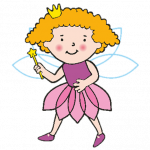Back To School: 5 Icebreakers to Help with Getting to Know Your New Class
Whether it’s your tenth year in front of the whiteboard, your first term at a new school or your first-ever class as a PGCE graduate, the end of the summer holidays can induce first-day nerves for teachers and children alike.
The school gates are open, the coffee mugs are filled, and children are scuttling through the door wearing baggy jumpers with plenty of ‘growing room’.
The first day of term is here.
Quicker than you could finish watching a box set of Peaky Blinders during the summer break, Autumn term time has rolled around again. It’s time to make a solid first impression, assert your authority (while still being likeable), remember 30 new names and hit the ground running.
Some children are shy when meeting their new teacher. Others have seemingly been in solitary confinement for the past six weeks, keen to tell you about every new YouTube personality they have become acquainted with (in intricate detail, at least twice, so they can be sure you heard).
Some may, unfortunately, be singing ‘Baby Shark’…
Whatever horde you encounter at 9AM on the first day of school, one thing’s for sure; getting it right can set the pace for the rest of the year.
You don’t necessarily need to choose between having a bit of fun and starting how you mean to go on.
With the right activities in place, you and your class can get to know each other without sacrificing any crucial learning or expectation-setting time.
Here’s our top 5 ideas for first day tasks to break the ice and set the bar.
1. Classmate Bingo
Activities which encourage children to engage with each other will help you to prevent socialisation issues later on, with feelings of isolation often distilled after early interaction with peers.
To encourage your new pupils to mingle, try creating bingo cards with a series of potential characteristics rather than numbers, for example: ‘has a cat’, ‘plays football’, ‘is wearing white socks’, etc. 
The children can then chat to their classmates and find out who, quite literally, ticks those boxes. Once they’ve found a series of people with characteristics to complete a line, you’ll soon know – “BINGO!”.
To give the exercise additional value, you can always provide blank bingo cards, allowing children to write their own ideas in the squares and practice keeping their handwriting small and neat.
2. Find Your Tribe
If you have a seating plan in mind, or intend to split children into particular workgroups, there can sometimes be a little resistance from those who’d rather stick with their friends.
To introduce the idea with somewhat less apprehension, try giving each child a piece of paper with an animal on it.
Their task is to find the other children who’ve been allocated the same animal – but there’s a catch. They can only make the animal noise.
Once the children have found the other oinks, woofs or roars, they can put their creative skills to work by thinking of their own group name to secure their bond.
3. Chain Reaction
Appreciating each other’s skills, as well as the value of teamwork, is crucial for interpersonal classroom relationships.
To help children find out more about their classmates (and help you discover more about your pupils), try providing each child with 5 strips of paper, and ask them to write down their 5 best talents.
Once each child has had the chance to read their talents aloud, you can then turn the 5 strips of paper into a chain, which can be added to that of every other child in the class.
The result? A visual aid of how individual skills can combine to support the whole group.
As a teacher, you’re conducting one of the first literacy exercises of the year; as well as an important life lesson.
4. Over To You
Few teachers could deny that teaching a set curriculum often feels restrictive. The first day of term is a good opportunity to explore a child-led approach, before the lessons begin in earnest.
Asking children to write or talk about what they would like to learn over the year is a great way to tune in to their interests. It will, no doubt, be impossible to squeeze each topic into the school year; however, this information can still be used in subtle ways, to pique a child’s interest.
For example, a particular week’s spellings could be focused around George’s interest in dinosaurs (and if George has revealed himself to be a reluctant writer, this could be just what you need to spark engagement and build confidence).
5. Bookmark Buddies
Many children have more in common than they think – especially when it comes to beloved authors and illustrators.
As an early introduction to recommending books, try asking children to create their own bookmark, then take it home to mark a passage in their favourite book. When the children return to school, they can read these favourite passages aloud to the class, starting a literacy discussion which may inspire other classmates to give the same story a try.
Similarly, these books can be added to a reading list, which can be referred to continuously. The children will find each other’s enthusiasm for the titles infectious, thus helping to form an early passion for literature.
Bonus: Mighty Writer is a unique literacy tool which allows children to break the ice on the first day of school, as well as continuing to support enthusiasm for writing throughout the year.
 Using numerous images to help tell a story on a large mat, Mighty Writer creates independent, confident and capable writers; all by encouraging children to share their ideas.
Using numerous images to help tell a story on a large mat, Mighty Writer creates independent, confident and capable writers; all by encouraging children to share their ideas.
On the first day of term, Mighty Writer can allow children to be creative and learn essential literacy skills; all while discovering more about each other.
Can the class tell a story about an adventure they had over the school holidays?
How about continuing a passage from a classmate’s favourite book? Could they create an alternative ending to the story?
Perhaps they could even dictate what they think you’ve been up to over the summer break (assuming the entire class doesn’t believe you live in your classroom).
Younger children may choose to tell their stories just with picture tiles, whereas older or more confident storytellers may add visual aids to represent punctuation, sentence openers and conjunctions. Meanwhile, teachers can use sentence mats to demonstrate each part of the writing process.
While the children use tiles to create their story, teachers can help to provide scaffolding around each sentence, using sentence openers and punctuation; symbols which represent adjectives, emotions, verbs and adverbs also provide structure for coherent and grammatically-correct sentences.
Better yet, these pictorial structures will allow children to easily transcribe their ideas, transforming their literacy skills without even realising; for them, they’re simply having fun!

